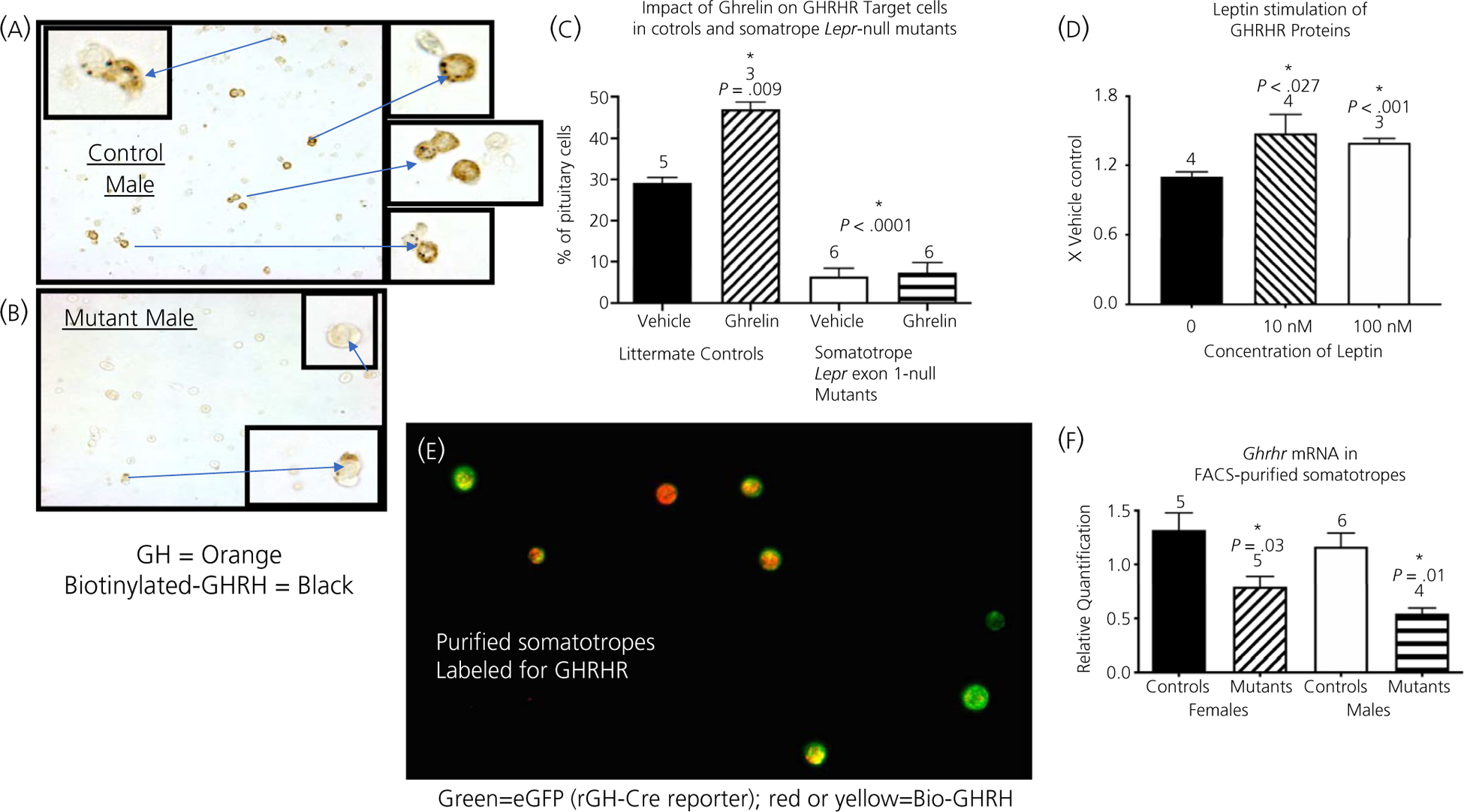FIGURE 1.

Growth hormone-releasing hormone receptor (GHRHR) reduction in the Lepr-null pituitary. A,B, Assay of one-day cultures of dispersed whole pituitary cells from adult control mice (A) or mutant mice (B); biotinylated GHRH (Bio-GHRH) (black) and GH immunolabelling (orange). C, Counts of cells labelled for Biotinylated GHRH from the whole pituitary cultures in (A,B), adding the results from the counts of cells stimulated with ghrelin. D, GHRHR enzyme immunoassay of protein extracts from pituitary pieces stimulated with leptin. E, Cytochemical detection of Bio-GHRH in purified somatotrophs from control, dioestrous females; Bio-GHRH is detected by the red fluorescence marker, Dylight 594, somatotrophs are detected by enhanced green fluorescent protein (eGFP). Cre-reporter was floxed tdTomato, eGFP. Cytoplasmic overlap in expression is detected by yellow/orange fluorescence. F, mRNA extracts from purified somatotrophs (from male and female mice) were assayed for Ghrhr mRNA in purified somatotrophs. C, Statistical analysis. *Significantly different from vehicle control as tested by two-way ANOVA followed by Tukey’s post-hoc test. In control cultures, ghrelin stimulated a significant increase in cells with GHRHR (F1,14 = 9.012, P = .009); leptin receptors (LEPR)-null mutants had a significant decrease in cells with GHRHR (F1,14 = 141.3, P < .0001). Interaction, F1,14 = 7.616, P = .015. D, One-way ANOVA followed by Bonferroni’s post-hoc test, F2,8 = 6.09, P = .025; n = 4 samples per group. F, *Significant by two-way ANOVA followed by Tukey’s post-hoc test; source of variation is controls vs mutants, F1,16 = 21.87, P = .0003; Males vs Females, F1,16 = 2.728, P = .1181. Interaction, F1,16 = 0.164, P = .691. FACS, fluorescence-activated cell sorting
